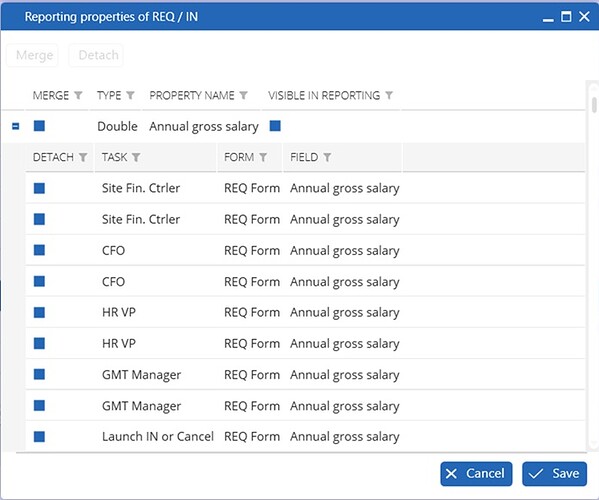Reporting Properties: Highlight the Right Data, in the Right Place
A business application isn’t just meant to execute tasks — it should also produce actionable data.
With ROK, you can identify and structure the key information from each application using reporting properties.
 What’s It For?
What’s It For?
- Clearly define the data you want to track or analyze (KPIs, dates, statuses, stakeholders…)
- Expose it in dashboards, exports, or analytics
- Create consolidated views in the user portal or monitoring modules
 How Does It Work?
How Does It Work?
- In the designer, any field or property can be marked as a reporting property
- You define its name, type, and format
- These properties are then easily searchable and viewable
![]() You can:
You can:
- Filter records using these properties in the portal
- Display them in lists or Excel exports
- Use them as a basis for tracking indicators
 Real-World Examples
Real-World Examples
In an HR application: define “Start date”, “Contract type”, “Approval status” as reporting properties
In a purchase request: track “Amount”, “Processing time”, “Procurement manager”
In a quality process: automatically extract all “major non-conformities” with their status and deadlines
 Why It’s a Game Changer
Why It’s a Game Changer
- Your applications become natively analytical, without relying on external BI tools
- You structure your data from the design phase
- You turn workflows into real-time operational sensors
